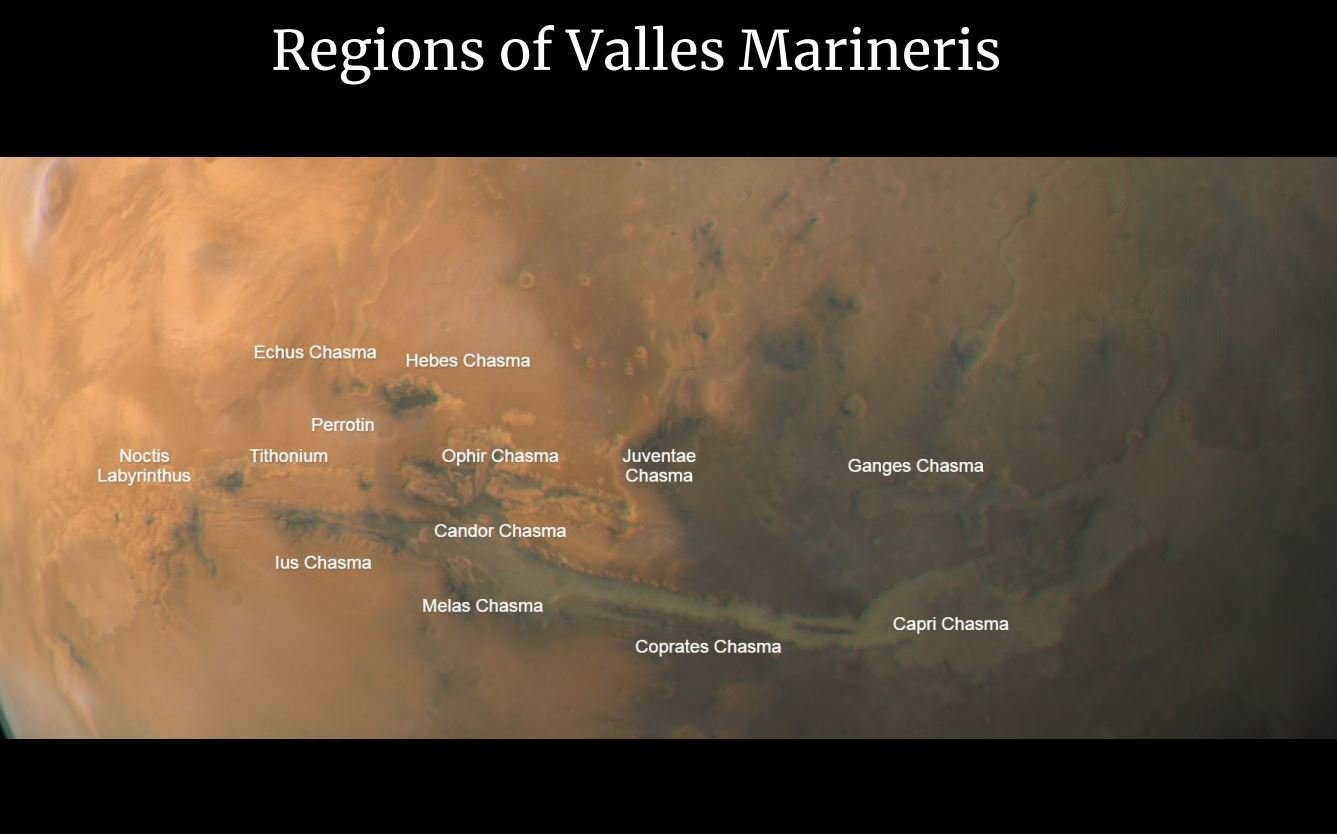Valles Marineris is the one of the largest canyon systems in the Solar System with its length over 4,000 km, width of 200 km and depth reaching up to 7 km. Valles Marineris begins south of the equator in Tharsis region and stretches to the west. Compared to the Grand Canyon in Arizona, USA, Valles Marineris is approximately 10 times longer and five times deeper. The name is derived from the Mariner 9 orbiter, which discovered these canyons in 1971.
08-18-2021 | Orbit: 95
Formation of Valles Marineris
The formation of Valles Marineris started around 4 billion years ago in Noachian period. It is closely related to origin of Tharsis region, which consisted of three stages. In the first stage, volcanic activity and post-glacial rebound, in other words rising land masses, were prominent. Increase of volcanic activity in Tharsis led to creation of grabens due to the added pressure on the crust, which subsided over time. These gigantic grabens are canyons forming Valles Marineris. In the second stage, there was again an increase in volcanic activity which resulted in the formation of fractures Stage three was a period of forming shield volcanoes such as Olympus Mons.
Noctis Labyrinthus is a region on Mars located in the center of Tharsis, in the Phoenicis Lacus quadrangle. The area is well-known for its canyons and valleys formed by faulting and several show features of grabens. It is notable for occurrence of many minerals.
Ius Chasma is a canyon in the Coprates quadrangle. With its length of 938 km, it belongs to one of the largest canyons in Valles Marineris. Formation of the canyon was affected by a process known as sapping. During sapping the water leaking down the cliffs evaporates before it reaches the bottom of the canyon. Ius Chasma was also shaped by avalanches, faulting, and grabens.
Tithonium Chasma, a large canyon named by a classical albedo feature, is located in the Coprates quadrangle. It is 810 kilometers long and between 10 to 110 kilometres wide, it narrows down in the east part with a maximum depth of approximately four kms.
Echus Chasma is a 100 km long, 10 km wide and up to four km deep canyon in the Lunae Planum, in Coprates quadrangle. In the Hesperian Epoch, the running theory is that there was a lake filled with water, which provides the explanation for the clay found on the bottom of the canyon.
Hebes Chasma is around 319 km long and it is made unique by the presence Hebes Mensa. Located in the centre of the depression, Hebes Mensa is a massive mesa towering five kilometers above the valley floor.
Ophir Chasma is a valley distinguished by its width and is located in the north of the centre of Valles Marineris. Ophir Chasma is around 317 km long.
Candor Chasma is one of the largest canyons in the Valles Marineris with its length of over 773 km. It is located in the centre and it is divided to East and West Candor Chasma.
Melas Chasma is the widest part of the Valles Marineris. Hydrated sulfates found in this region support the theory of the existence of an ancient lake filled with water.
Juventae Chasma is a large canyon located in the north with its length of 250 km. It forms an outflow channel Maja Valles.
Coprates Chasma is one of the longest canyons on Mars, it is 966 km long. There is a strong evidence of an ancient lake.
Ganges Chasma is located in the east of Valles Marineris. Named after the South Asian river, the Ganges Chasma is unique for its depth.
Capri Chasma is located on the east edge of Valles Marineris.
A close-up view of Valles Marineris



